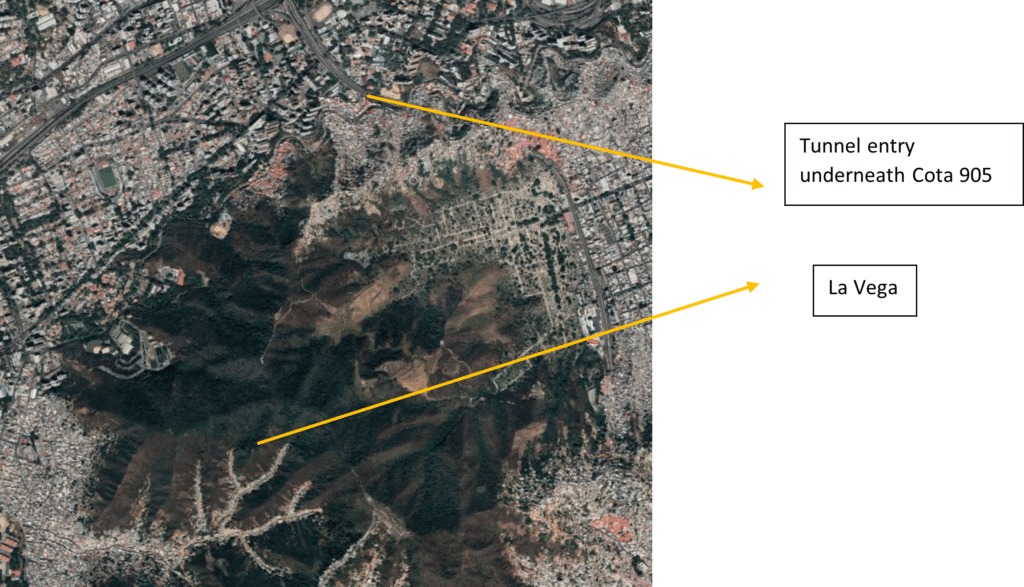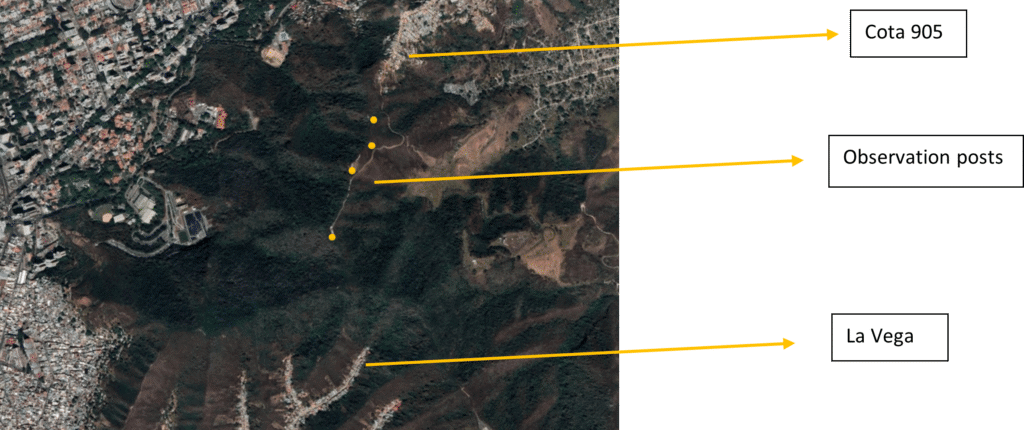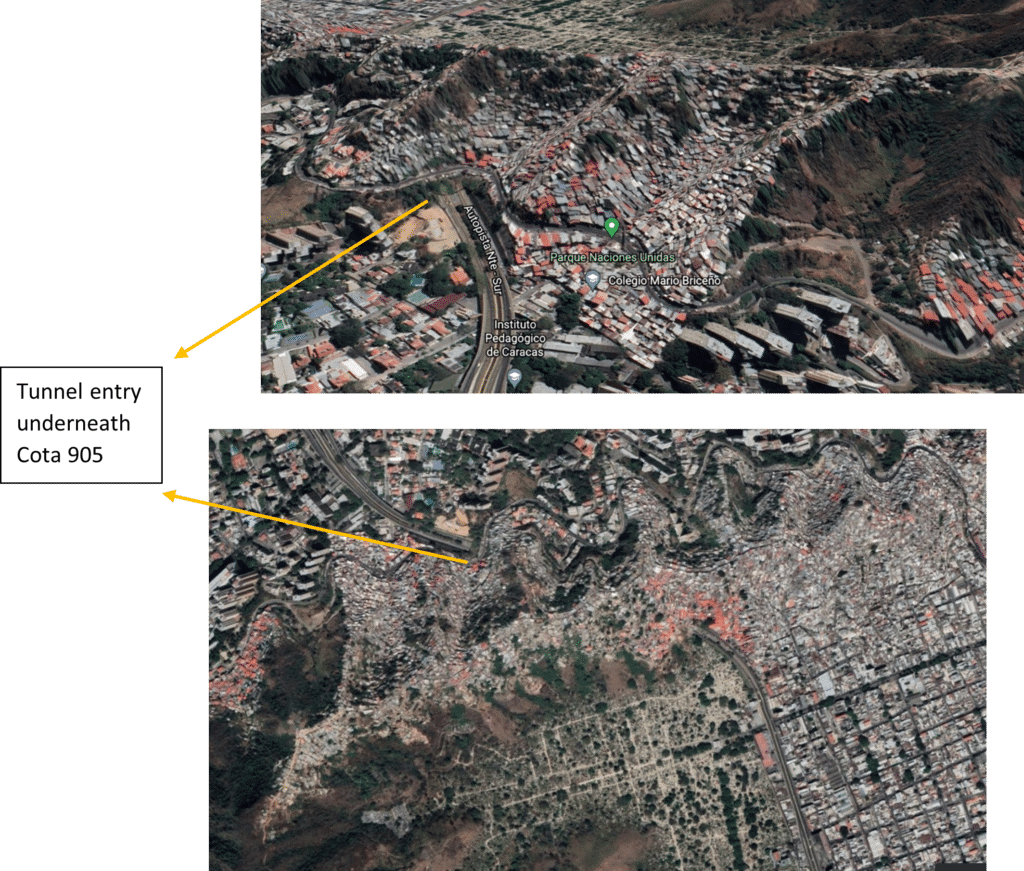What to take
Crime in Caracas evolved significantly after the Chavez & Maduro government began to informally cooperate with organised crime in 2013. Simultaneous to that evolution, the government used paramilitary bodies like colectivos to reduce any type of opposition. Tolerating criminal violence and using it as a governmental response to unrest reduced governmental influence amongst districts in Caracas. Simultaneously, the arbitrary use of violence likely increased the risks of security concerns spilling outside of violence-concentrated areas.
- The government of Maduro likely depends on criminal organisations intentions to maintain a minimal degree of stability in regions of Caracas. The autonomous capacity of Maduro to target, damage and limit the actions of organised crime will likely continue to be reduced.
- It is likely that armed forces and law-enforcement have limited capabilities to successfully counter non-state actors. Crime in Caracas is likely to expand given the highly likely potentially violent response from governmental forces. An increase in violence combined with limited governmental capabilities is an opportunity for the expansion of criminal governance instead of solely violence.
Background
Attempt at a “Dialogue”
In 2013, the growth of criminal organisations comprising large groups was tackled through an attempted dialogue named ‘Peace Zones’. Law-enforcement and armed forces theoretically avoided neighbourhoods with criminal presence in exchange for a reduction in violence and criminal activities. Instead, ‘mega-gangs’ increased capabilities and strengthened an autonomous position within regions of Caracas like Cota 905, La Vega, El Valle, El Cementerio or neighbourhoods in Petare. The dialogue attempt, repeated in 2017, established a prohibition of law-enforcement and armed forces to enter the Cota 905 district in particular, making organised crime in Caracas an almost certainty. Unofficial autonomy within regions of Caracas increased violence and extortion towards civilians, limiting the degree of state response and accountability.
“Dialogue” With Arbitrary Violence
The Operation ‘Liberation of the People’ (OPL) was an initiative launched from 2015 to 2017 to tackle homicides and crime in Caracas and wider Venezuela. Criticised for its lack of accountability, governmental forces stormed neighbourhoods and homes selectively executing civilians allegedly involved in organised crime. Along with the Special Action Forces (FAES), paramilitary organisations like colectivos obtained the legal power to target and execute civilians. Blurring the degree of responsibility further, looting and property destruction became widespread during the OLP. The civilian death toll reached 560 casualties according to Venezuelan journal investigations.
The UN report condemning human rights abuses in Venezuela records 413 civilian casualties. Despite the exact figure, civilians became targeted while criminal organisations likely suffered little-to-no damage in capabilities. After criticism of the OPL, peace zones became re-established in Caracas, limiting the expansion of criminal actors within particular districts. Since 2020, Cota 905 reports emerged of confrontations between governmental and criminal actors, currently continuing in 2021 and threatening the limited violence framework in Caracas.
Cota 905, La Vega and Domestic Insurgencies
Cota 905
In almost complete control by criminal organisations, the Cota 905 is almost certainly out of the practical jurisdiction of Venezuelan forces. The peace zones accorded in 2017 provides the government with an executive capability to enter the district. Still, it is highly unlikely that governmental forces are capable of entering without resistance and almost certain violence.

‘El Coqui’, ‘El Garbis’ and ‘El Vampi’ are the criminal figures leading the “mega banda” or mega-gang in the district of Cota 905. Each individual controls smaller criminal groups creating a large-scale criminal organisation that manages and controls a fixated geographical region in Caracas. The combined capacity of the mega-gang is estimated around 400 armed personnel in 2021 while in 2016 it was estimated to be around 180. Using drug-trafficking, extortion and other illicit trafficking to finance operations and expansions, violence and crime in Caracas, particularly in the Cota 905, is majorly dependent on the willingness of armed actors rather than governmental capabilities.

La Vega is likely the location of the current expansion of the Cota 905 mega-gang. Clashes in La Vega as well as Cota 905 reported in May 2020 showed the capability of criminals to target and successfully raid a police station without significant deterrence. In January 2021, El Coqui and El Vampi entered la Vega as an expansion instead of sporadic clashes, exiting the peace zone and encountering FAES and GNB governmental resistance. Crime in Caracas became more evident and highly likely incentivised recent events. In early June neighbours reported road infrastructure connecting the districts of La Vega and Cota 905, with journalist Delmiro del Barrio geographically identifying transport and surveillance positions of the mega-gang between districts. Armed confrontations reported during May and currently in June indicate the ability to maintain territories rather than relying on the safe-haven of Cota 905.

Capability of Expansion
The capability of expansion and the extending the length of attacks likely place the gang of El Coqui as a domestic non-state actor threat rather than a criminal liability in Caracas. A tactical approach to defending territory such as placing surveillance between districts against governmental forces is reinforced by an insurgency capability. Crime in Caracas like in Cota 905 is almost certainly attempted to be legitimised and normalised amongst civilians. The mega-gang reportedly enforced the preference of covid measures during the beginning of the pandemic. mega-gangs as informal organisers of the district than governmental forces. due to political alienation from security threats and repression. Civilians is combined with governmental leniency. During the clashes in January, off
Increase in Activity
The unofficial norm of sporadic confrontations and limited violence is likely fading between the Venezuelan government and criminal actors. FARC factions in Apure clashed against governmental forces, including FAES groups, during the month of May. In January and recently in May, the gang of ‘El Coqui’ attempted formal expansion towards the district of La Vega in Caracas. This caused clashes with the Penal, Scientific and Criminal Police Corps (CICPC) as well as FAES forces, causing 4 injuries amongst the CICPC. Sporadic confrontations are common in particular regions like the Venezuelan-Colombian border and the southern Bolivar state.
Open and frequent clashes within districts in Caracas or against large non-state actors like FARC are not common, indicating a likely shift from the unofficial status quo of peace zones. Organised crime in Caracas will likely not expand significantly in the short-term. Instead with the likelihood of clashes being high, there will likely be increases in the capabilities of armed actors and particularly El Coqui’s gang within Cota 905 and La Vega.
Intelligence Cutoff Date: 08th June 2021 (UTC -7)

